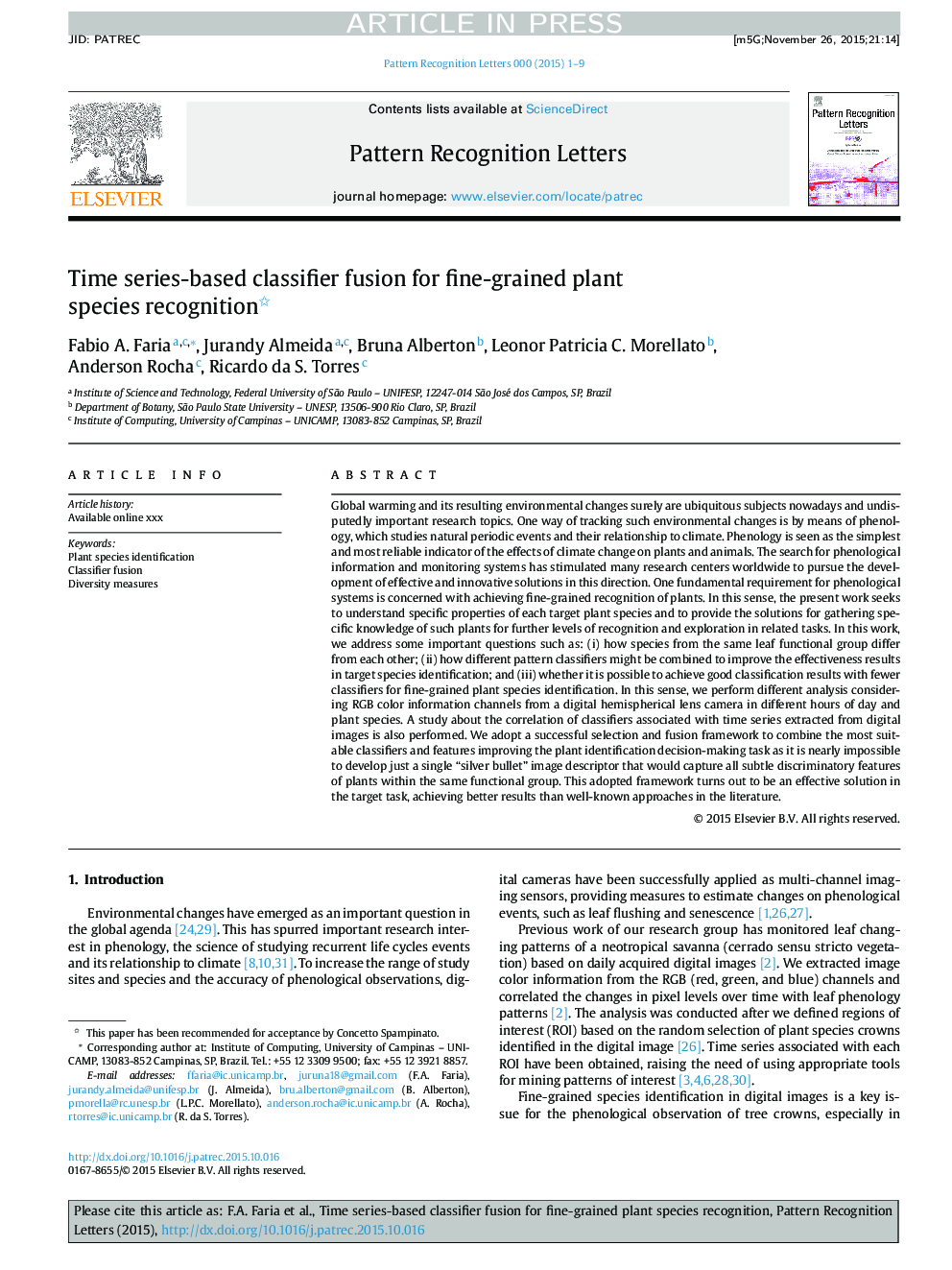| Article ID | Journal | Published Year | Pages | File Type |
|---|---|---|---|---|
| 4970356 | Pattern Recognition Letters | 2016 | 9 Pages |
Abstract
Global warming and its resulting environmental changes surely are ubiquitous subjects nowadays and undisputedly important research topics. One way of tracking such environmental changes is by means of phenology, which studies natural periodic events and their relationship to climate. Phenology is seen as the simplest and most reliable indicator of the effects of climate change on plants and animals. The search for phenological information and monitoring systems has stimulated many research centers worldwide to pursue the development of effective and innovative solutions in this direction. One fundamental requirement for phenological systems is concerned with achieving fine-grained recognition of plants. In this sense, the present work seeks to understand specific properties of each target plant species and to provide the solutions for gathering specific knowledge of such plants for further levels of recognition and exploration in related tasks. In this work, we address some important questions such as: (i) how species from the same leaf functional group differ from each other; (ii) how different pattern classifiers might be combined to improve the effectiveness results in target species identification; and (iii) whether it is possible to achieve good classification results with fewer classifiers for fine-grained plant species identification. In this sense, we perform different analysis considering RGB color information channels from a digital hemispherical lens camera in different hours of day and plant species. A study about the correlation of classifiers associated with time series extracted from digital images is also performed. We adopt a successful selection and fusion framework to combine the most suitable classifiers and features improving the plant identification decision-making task as it is nearly impossible to develop just a single “silver bullet” image descriptor that would capture all subtle discriminatory features of plants within the same functional group. This adopted framework turns out to be an effective solution in the target task, achieving better results than well-known approaches in the literature.
Keywords
Related Topics
Physical Sciences and Engineering
Computer Science
Computer Vision and Pattern Recognition
Authors
Fabio A. Faria, Jurandy Almeida, Bruna Alberton, Leonor Patricia C. Morellato, Anderson Rocha, Ricardo da S. Torres,
